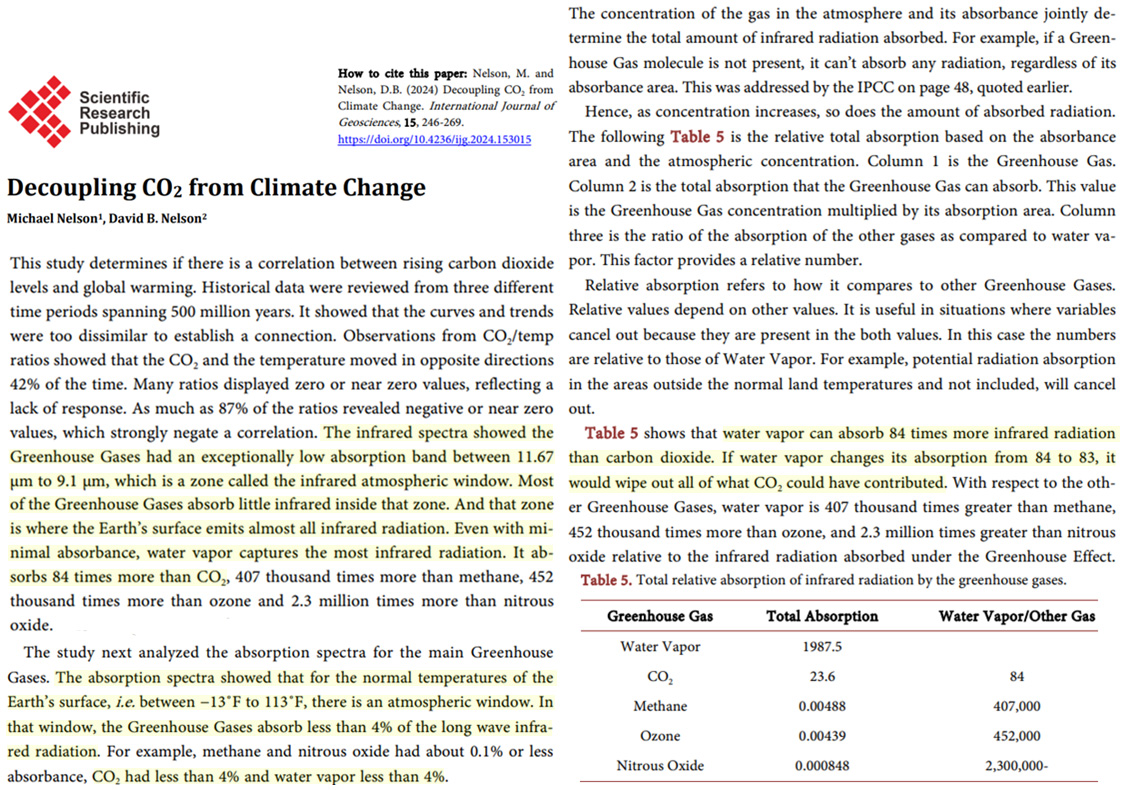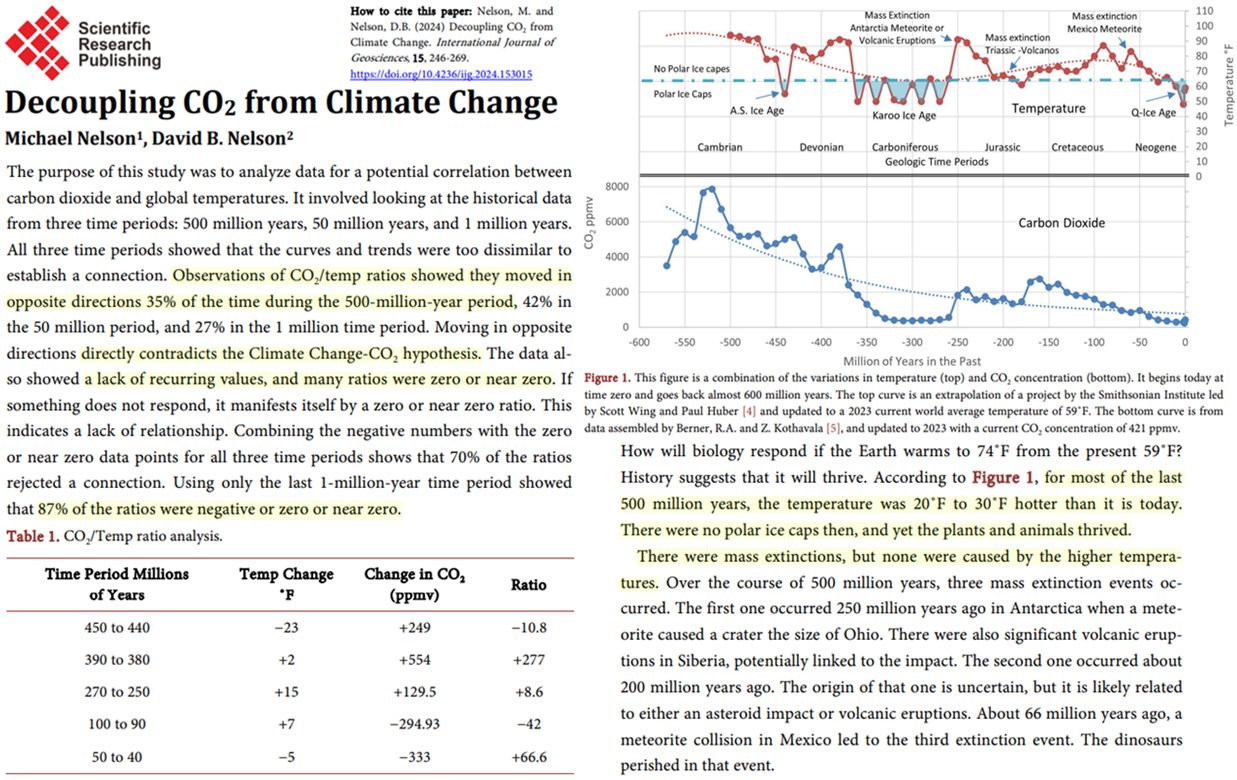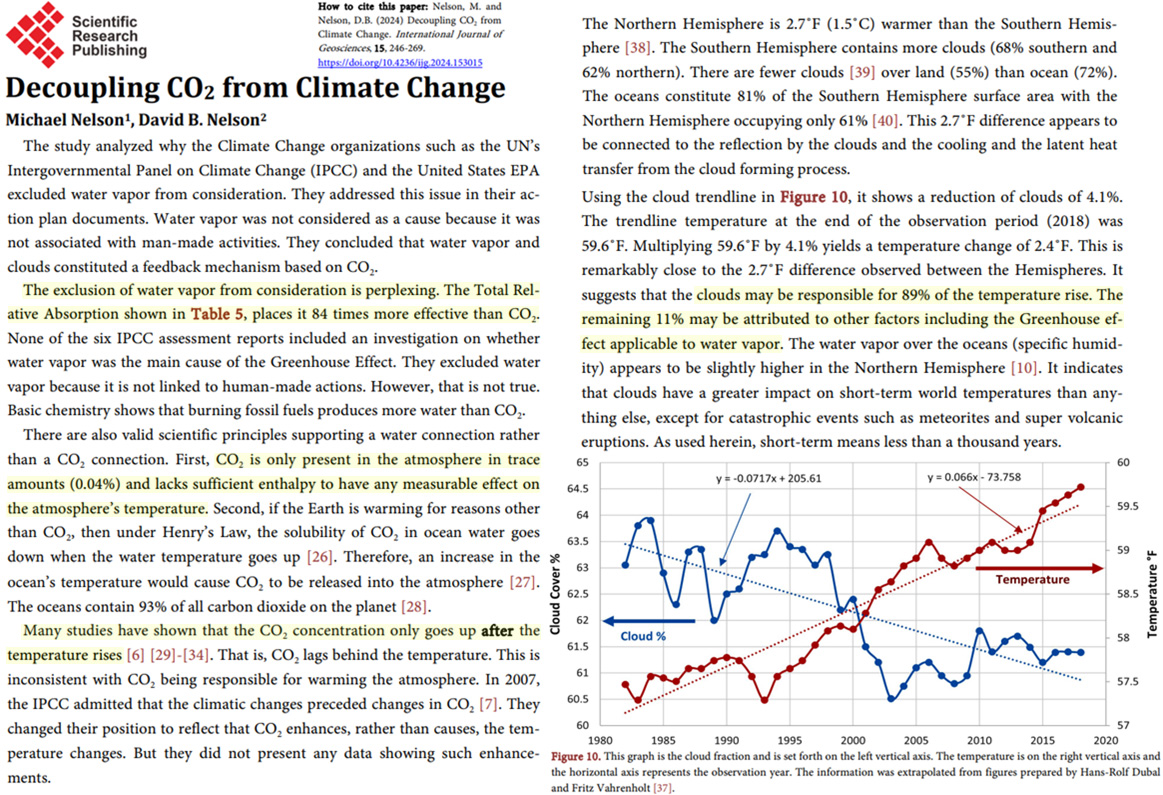“CO2 is only present in the atmosphere in trace amounts (0.04%) and lacks sufficient enthalpy to have any measurable effect on the atmosphere’s temperature.” – Nelson and Nelson, 2024
New research (Nelson and Nelson, 2024) further documents the inconsequential role that CO2 plays in climate.
Less than 4% of longwave infrared radiation is absorbed by greenhouse gases in the lower atmosphere. Greenhouse gases can have no effect outside of their narrow infrared atmospheric window.
Of all the greenhouse gases, water vapor (30,000 ppm) has easily the most dominant effect, absorbing 84 times more radiation than CO2 does, and 407,000 times more radiation than CH4 (methane).
If water vapor’s absorption capacity were to change by a factor of 1 (i.e., from 84 times greater than CO2 to 83 times greater), this tiny change would “wipe out all of what CO2 could have contributed” within the greenhouse effect.

Image Source: Nelson and Nelson, 2024
Over the last 50 million years CO2 and temperature were negatively correlated (CO2 rose, temperatures fell or temperatures rose, CO2 fell) 42% of the time, and there was a glaring lack of recurring ratios, and “many ratios were zero or near zero.”
Over the last 1 million years “87% of the ratios were negative or zero or near zero.” This “directly contradicts the Climate Change-CO2 hypothesis.”
Furthermore, high CO2 levels and/or warming were not the cause of mass extinctions, as plants and animals “thrive” in much hotter temperatures than exist today.
These conclusions are very similar to Davis (2017 and 2023), who determined that over the last 210 million years (a) CO2 falls as temperatures rise (negative correlation, r = -0.76), (b) mass extinctions occur 4.08 million years after CO2 peaks, and (c) global warming/CO2 radiative forcing “did not cause extinction of biodiversity.”

Image Source: Nelson and Nelson, 2024
Finally, approximately 89% of the warming over the period 1982-2018 could be attributed to the decline in cloud cover, which has allowed more solar radiation to be absorbed by the Earth’s surface. The rest “may be attributed to other factors including the greenhouse effect applicable to water vapor.”
In other words, due to the decoupling of CO2 from global warming (or cooling), there is effectively no consequential role for CO2 in climate change.






We must reduce the man made clouds?!
[…] Water Vapor Absorbs 84 Times More Radiation Than CO2 … Clouds Drove 89% Of 1982-2018 Warming […]
Ban water now!
In the Nelson and Nelson paper, in section 4, they define a window of IR wavelengths emitted by earth from 9.1micrometer to 11.67 micrometer corresponding to -13F to 113F. However the 9.1um and 11.67um only correspond to the peaks of the black body emission curve for that temperature. The emission curve distribution has diminishing values on either side of the peak, that although less than the peak still have some emission intensity that could be absorbed by H2O or CO2 etc. Instead of showing the window they should have shown the emission curve for both temperatures.
Slight criticism.
In the Nelson paper the gas %ages add up to more than 100%. It might have been more accurate for them to have quoted a water vapour range (say 0.2% to 3%) Water vapour at any given temperature, altitude or location varies wildly but it’s presence and process of fluctuation is key to understanding climate. CO2 is marginal.
This is a good one to print out and hand to the “greenies” I know.